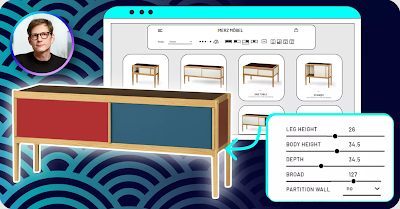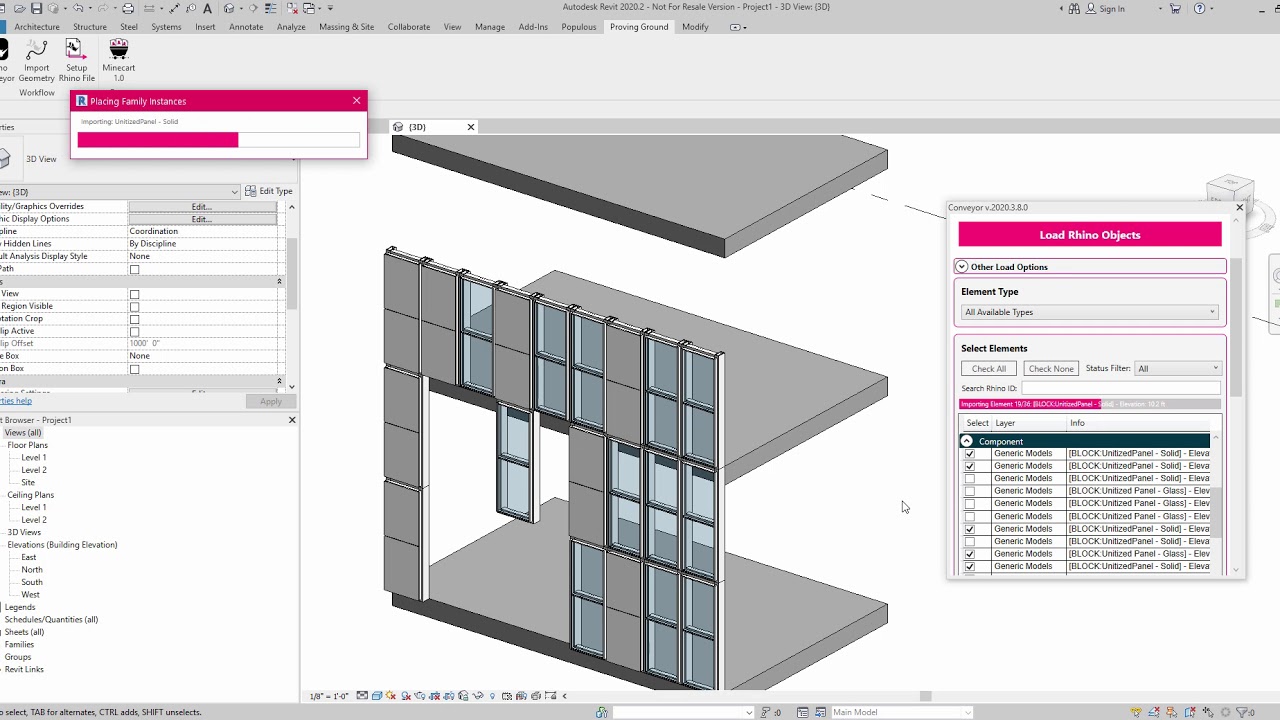SimplyRhino UK has completed its latest GPU test report, looking at performance not only with Rhino 7 (and Rhino Raytrace rendering engine) and popular companion products such as KeyShot, Twinmotion, V-Ray for Rhino and Chaos Vantage.
Monday, February 28, 2022
Rhino 7 GPU / Graphics Card Tests (by SimplyRhino UK)
SimplyRhino UK has completed its latest GPU test report, looking at performance not only with Rhino 7 (and Rhino Raytrace rendering engine) and popular companion products such as KeyShot, Twinmotion, V-Ray for Rhino and Chaos Vantage.
Friday, February 25, 2022
Getting to know... MERZ MÖBEL: Furniture (Custom) Made In Germany!
MERZ MÖBEL, a German furniture company, recently released a brand new web site featuring several highly customizable pieces of furniture. It allows customers to design sideboards according to their preferences and needs with the help of additive manufacturing, traditional carpentry, Grasshopper, and ShapeDiver.
In this interview, Ulrich Merz, product designer and founder of Merz Möbel, talks to ShapeDiver and gives us a glimpse into his company and story.
Read the complete interview here...
Thursday, February 17, 2022
Rhino-CVC - New object library for HVAC
Rhino-CVC is a 3D object library associated with Grasshopper definitions, distributed in a Rhino toolbar, allowing to create piping, VMC and heating elements, automatically and fully configurable with ergonomics.
Parametric elements include:
- 3D and 5D curves to be welded
- Concentric and eccentric reducers
- Dished ends to be welded,
- Equal and reduced tees to be welded
- Radiators (fully configurable)
- Straight tubes (steel, copper, stainless steel, multilayer, and PVC)
- Bendable tubes (steel, copper, multilayer)
- Piping layers
The tubes have built-in yardage (length, weight, and capacity). The layers are preconfigured (choice in the tools).
Bills of materials—very clean with the possibility of formatting—are automatically generated individually: piping, fitting to be welded, equipment, and VMC.
This plugin receives updates to increase its rich capabilities further and also to improve them constantly because we are more than anything, eager to offer the best tool possible to have as much fun using it as we had to create it!
Monday, February 7, 2022
New version of Conveyor Rhino and Revit
Conveyor can transform workflow between Rhino® and Revit® with easy-to-use repeatable standards. Conveyor enables you to convert geometry and data between Rhino and Revit without the need for complicated workflow or computational interfaces.
Conveyor V3 has just been released:
- Integration with Rhino.Inside.Revit technology
- Convert geometry and data to Rhino
- Edit Revit properties from Rhino
- Send directshapes with material information to Revit.
Friday, February 4, 2022
Rhino.Inside cadwork
Cadwork is the market leader in software solutions and CAD/CAM 3D for wood construction, framing, and carpentry.
Now, thanks to the Rhino.Inside technology, you can take advantage of cadwork and Grasshopper together!
Thursday, February 3, 2022
Open Sky/Oasiz (by ARCHIOLOGICS)
Adolfo Nadal from ARCHIOLOGICS has been kind enough to share his recent project Open Sky/Oasiz, modeled with the help of Rhino and Grasshopper:
At ARCHIOLOGICS, we conceive each project as a process thought and designed to meet the expectations, tastes and needs of each profile. We combine design and construction with the highest levels of precision through a workflow based on virtual models, true digital twins for construction. We are able to combine the most advanced industrialization and design systems with the customization of each design and work thanks to our Rhino-based, tailor-made solutions. Whether you are looking for a pure geometric or textured design, specific sizes or proposals, or a bright and striking aesthetic, our team of professionals will develop the best version for your needs.
From design to construction
Our façade solutions highlight the value of material and geometry through fully customized computational processes. We optimize investment and minimize costs thanks to early analysis and rationalization of the geometry, improving its constructive and aesthetic potential. All this can be achieved by harvesting the native power of Rhinoceros' NURBS geometry core and the extended functionality we add by means of Grasshopper and the software's API. In this particular case, we were able to develop more than 22000sqm of unique panels seamlessly integrating design and construction procedures, such as surface rationalization, structure optimization, and drawing automation, including a wide variety of planar, curved, and double curved geometries.
At Oasiz, we provide value to this raw material to the extent that it becomes a truly unmatched design. Unique products are combined with geometric cladding and vitreous finishes, adopting the essence of industrial and minimalist environments for a project that seeks to stand out by itself.
Introducing: The New ShapeDiver Plugin (v1.9)!
After introducing their brand new platform a week ago, it’s now time to unveil the new version of ShapeDiver's Grasshopper plugin. This time they've tackled some of your most requested features such as new import and export file formats, a new attribute system, a plethora of new components, downloading and updating via Rhino’s Package Manager, and much more!
Read the complete article and learn more about these features...
Wednesday, February 2, 2022
2Shapes for Rhino 3.0 Released
2Shapes for Rhino, the jewelry design plugin for Rhino, just got to version 3.0.
- Micro Settings: Creating micro settings has never been so easy, intuitive, and dynamic.
- Quick Array on Curve: Array on Curve generates multiple copies of objects and arranges them dynamically along a curve.
- Recover the gems from your old Matrix and RhinoGold models.
- Quick Orient: All diamonds and gemstones are updated to 2Shapes and are entirely usable and editable in one click.
- Recess: Easily create depressions on your design to help set gems, 3D textures, and more!
- Weight: Get the weight of your model with a single click, including metal and gems!
- Quick Polar Array: Polar Array has an easy-to-use interface and many additional options to create what you are looking for.
- Technical Report: Significant improvements in reporting include logo customization and additional information such as weight, gems map, and much more.
- Rendering UI: Significant improvements in reporting include logo customization and additional information such as weight, gems map, and much more.
- New Rendering Materials: This new version includes more than 20 new materials, including such incredible materials as Diamond Cognac.







